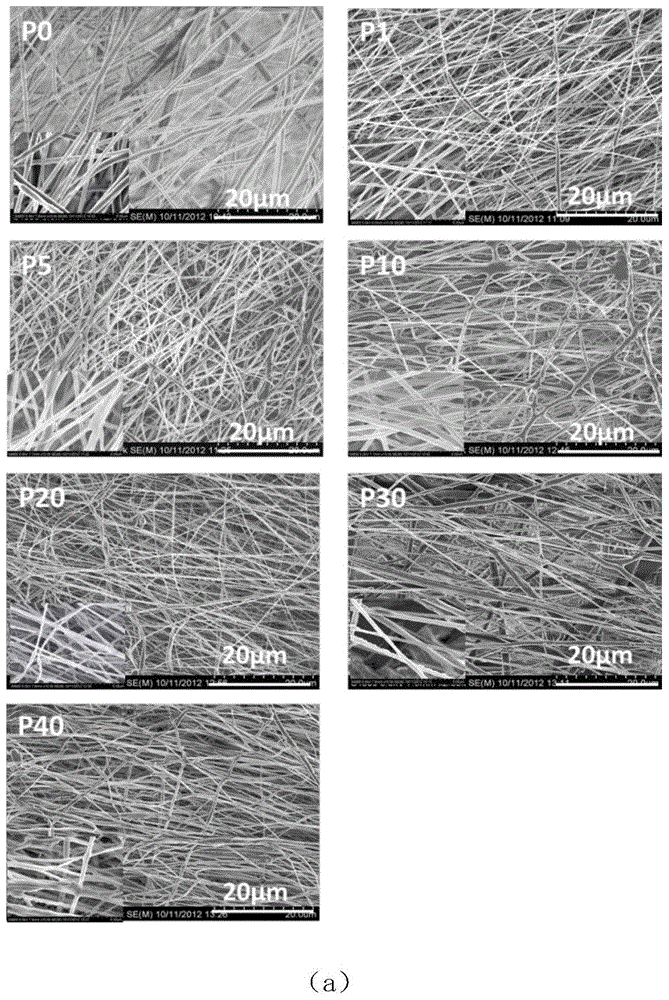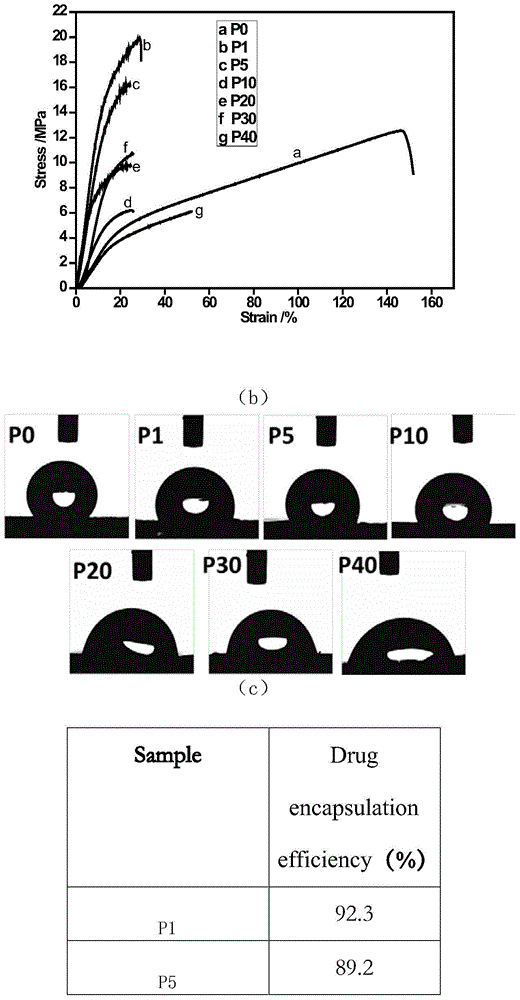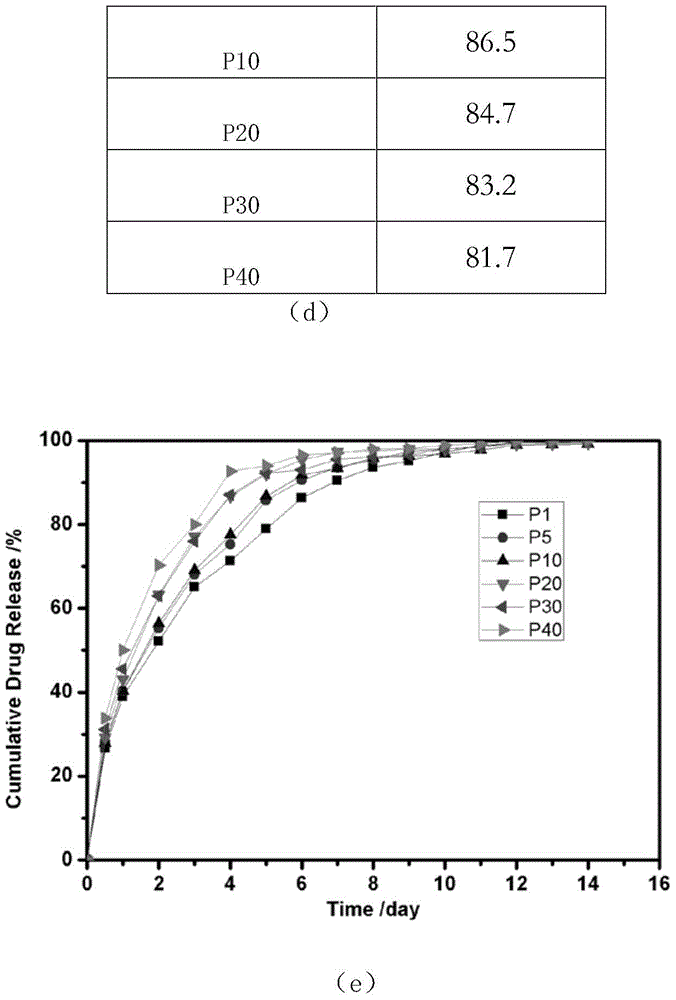Drug-loaded guided tissue regeneration membrane and preparation method thereof
A technology to guide tissue regeneration and drug loading, applied in medical science, surgery, etc., can solve few problems such as antibacterial properties
- Summary
- Abstract
- Description
- Claims
- Application Information
AI Technical Summary
Problems solved by technology
Method used
Image
Examples
Embodiment 1
[0056] 1. Dissolve 2 g of polycaprolactone and 0.2 g of metronidazole in a mixed solvent of 7.2 g of DMF and 10.8 g of DCM, and stir magnetically at room temperature for 12 hours to obtain polycaprolactone with a concentration of 10% (w / w), metronidazole A spinning solution with a mass ratio of azole to polycaprolactone of 10%.
[0057] 2. Take the solution for electrospinning, use a stainless steel drum as the receiving device, the drum speed is 200rpm, the voltage is 10KV, the receiving distance is 16cm, the spinning liquid inlet rate is 4mL / h, and the spinning is 5h. A single-layer guided tissue regeneration membrane with a thickness of about 250 μm was obtained.
[0058] 3. Dry the obtained fiber membrane in a fume hood at room temperature for 72 hours to ensure that the residual solvent is fully volatilized.
Embodiment 2
[0060] 1. Dissolve polycaprolactone and metronidazole in a mixed organic solvent of DCM / DMF=7:3, and stir magnetically at room temperature for 12 hours to obtain a concentration of polycaprolactone of 20%, and the concentration of metronidazole and polycaprolactone The spinning solution with a mass ratio of 50%;
[0061] 2. Electrospinning at room temperature, with a stainless steel drum as the receiving device, the drum rotation rate is 600rpm, the spinning solution flow rate is 3mL / h, the voltage is 12kV, the receiving distance is 15cm, and the spinning is 5h, and a single-layer guide with a thickness of about 200μm is obtained. Tissue regeneration membrane.
[0062] 3. Dry the obtained fiber membrane in a fume hood at room temperature for 72 hours to fully volatilize the residual solvent.
Embodiment 3
[0064] 1. Dissolve 1.5g of polycaprolactone and 0.3g of tetracycline hydrochloride in 13.5g of trifluoroethanol, and magnetically stir at room temperature for 12 hours to obtain solution A;
[0065] 2. Dissolve 1.5g of polylactic acid and 0.3g of tetracycline hydrochloride in 13.5g of trifluoroethanol, and magnetically stir at room temperature for 12 hours to obtain solution B;
[0066] 3. Mix solution A and solution B, and magnetically stir for 12 hours to obtain a spinning solution with a mass ratio of polycaprolactone and polylactic acid of 1:1, a polymer concentration of 10%, and a mass ratio of drug to polymer of 20%. C;
[0067] 4. Electrospinning with spinning solution C at room temperature, with a stainless steel drum as the receiving device, the rotation rate of the drum is 200rpm, the flow rate of the spinning solution is 2mL / h, the voltage is 13kV, the receiving distance is 20cm, and the spinning time is 10h to obtain a thickness of 250μm Left and right monolayer e...
PUM
| Property | Measurement | Unit |
|---|---|---|
| diameter | aaaaa | aaaaa |
| thickness | aaaaa | aaaaa |
| pore size | aaaaa | aaaaa |
Abstract
Description
Claims
Application Information
 Login to View More
Login to View More - R&D
- Intellectual Property
- Life Sciences
- Materials
- Tech Scout
- Unparalleled Data Quality
- Higher Quality Content
- 60% Fewer Hallucinations
Browse by: Latest US Patents, China's latest patents, Technical Efficacy Thesaurus, Application Domain, Technology Topic, Popular Technical Reports.
© 2025 PatSnap. All rights reserved.Legal|Privacy policy|Modern Slavery Act Transparency Statement|Sitemap|About US| Contact US: help@patsnap.com



